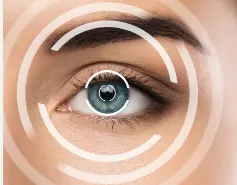Some vision changes can be expected with age. There may be a shift in how you perceive colors or how your eyes focus. You may need more light to read or drive. Many people wonder how to improve their vision once they notice these differences. Luckily, even though minor changes are a normal part of aging, many vision impairments are preventable and treatable.
Some age-related vision changes can be corrected with surgery, glasses or contacts. You can also keep your eyesight sharp by taking care of your health before serious problems begin. Some simple exercises can even keep your vision healthy.
“The most important and easiest exercise to remember is the 20-20-20 rule,” says Christopher E. Starr, M.D. FACS, ophthalmologist at Weill Cornell Medicine Ophthalmology. “When you’re on a computer, take a break every 20 minutes, for 20 seconds, by looking into the distance at an object that’s 20 feet away or further.”
Many vision problems are treatable or manageable if discovered early. However, once vision loss starts, it may be irreversible. Take steps to care for your eyes today to help protect your vision far into the future.
Most refractive errors develop in childhood and are caused by problems with the shape of the eye. The exception is presbyopia, caused by age-related loss of flexibility and strength.
“As we get older, our eye muscles that focus up close get weak,” says Dr. Starr. “Usually, that starts around age 40 and progresses to age 65 and beyond.”
Age may also be a factor in other eye conditions that can cause severe damage but are not a natural part of aging. These conditions can often be treated or slowed. However, they may lead to significant vision loss if not detected early. Examples include: Other eye conditions, such as computer vision syndrome, may not lead to vision loss but may still stress your eyes unnecessarily. This condition can happen when you spend long hours at a computer.
“It’s estimated you have up to 50% fewer blinks per minute when you’re staring at a computer,” says Dr. Starr. “This leads to dryness. As the day goes on, the fatigue of staring at these sort of near distance targets, like a computer or a mobile device, you’ll get frontal headaches and eye strain and blurry vision from the muscles getting weak as the day goes on.”










